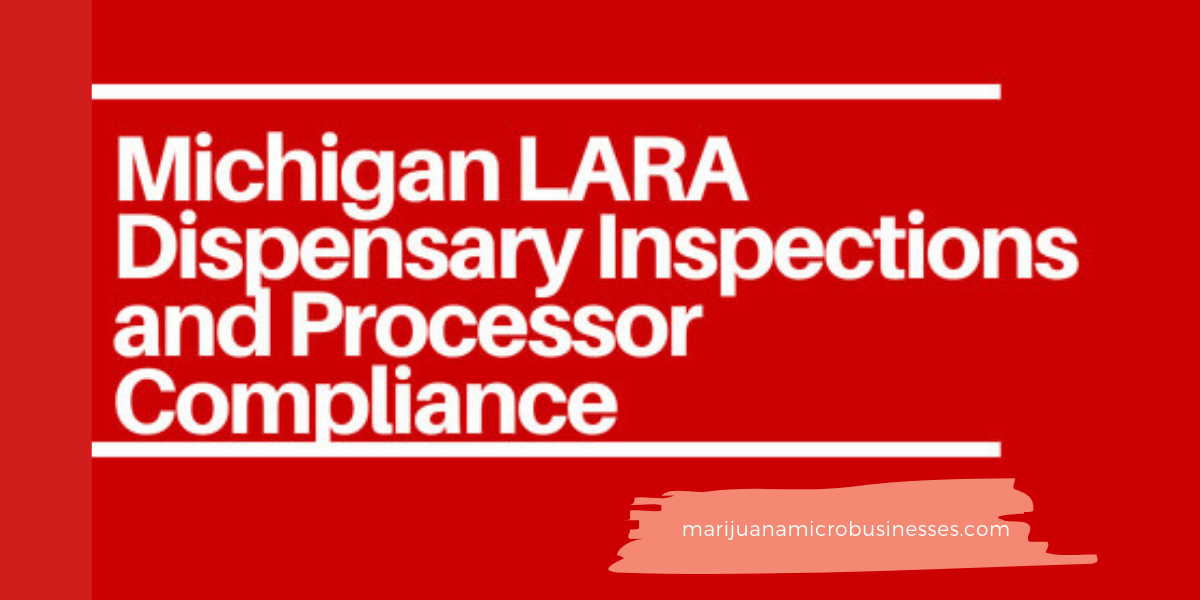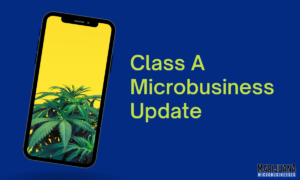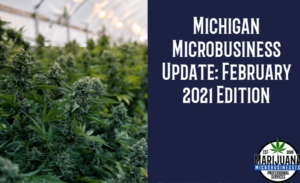An Overview and Summary of Common Compliance Issues
After witnessing a LARA provisioning center inspection firsthand, I thought it would be good idea to provide an overview to dispensary owners and processors of what constitutes compliant products and packaging for processed Marijuana products and what LARA inspectors are looking for when they conduct a provisioning center inspection. There has not been much written on the subject, and as a result, non-compliant packaging is rampant throughout Michigan dispensaries. Processed Marijuana goods with non-compliant packaging will need to be taken off the shelves and either re-packaged, thrown away, or returned to the processor. It is therefore important that both processors and dispensary owners understand what constitutes compliant packaging and products and what does not.
One piece of information that many dispensary owners do not understand is that most issues uncovered during the first LARA inspection will not count against a dispensary owner, except for serious and flagrant violations such as selling to non-card holders. That means that a dispensary owner has time and opportunity to correct any violations before a second, follow up inspection. The key for LARA, and for the report LARA presents to the Licensing Board with respect to your inspection, is that the issues identified in the first inspection were fixed before the second inspection.
Below are several common issues that many medical marijuana dispensaries and processors have faced during their inspections. Hopefully by reading this article, your company will not be tripped up by these issues like other processors and Michigan dispensaries that have already undergone their LARA inspections.
Cannot be Marketed to Kids
This is the biggest and also most subjective requirement that processors and dispensary owners must address. The rule states that “No edible marihuana product can be associated with or have cartoons, caricatures, toys, colors, designs, shapes, labels, or package that would appeal to minors”. During the inspection, I had a conversation with one of the license inspectors, and we discussed what could be considered to be marketed towards children.
The LARA inspectors acknowledged that it is not always clear what is considered to be marketed to kids, and that these determinations do involve a fair amount of discretion by LARA. This means that you need to stay on top of LARA guidance to ensure that you are up to date on the latest guidance with respect to packaging and product compliance.
One of the main takeaways is that anything that resembles children’s candy must be taken off the shelves. For example, if you wanted to sell gummies, you need to be careful about both the product and the packaging. The gummies cannot be animal shaped as that could confuse children. They also cannot have a name that would appeal to children—e.g. gummy bears. However, a gummie product with a neutral name that is not animal shaped would be acceptable.
The Emergency Rules also provide that cartoons—all cartoons—must be eliminated from the packaging. This was clearly laid out in Rule 33 of the Emergency Rules. I was told that this applies not only to cartoons aimed at or associated with kids but all cartoons in general, even “adult” cartoons. This also applies to brightly colored edibles, especially those with clear packaging making the “colorful” product observable to the public.
Here, it is important to know that while some cases are clearcut, some are not. When inspecting my clients’ products, there are often obvious violations, as well as very subjective determinations about what products and packaging would be considered to appeal to kids. As an example, there are several edibles that are covered in very colorful nerds candy. In this situation, whether LARA considers the item to be marketed to kids could depend as much on a product’s packaging as the actual product itself. It is therefore important to not have clear or see through packaging and to be extremely careful about what graphics are used on the packaging.
Products Must be Michigan Made
If you are selling marijuana products, LARA will want to see that the products all came from Michigan. Any marijuana product that did not come from Michigan will need to be taken off the shelves immediately. This applies not only for THC-products but for CBD products as well. LARA has power over enforcement with respect to licensing. While this means LARA can’t do much with respect to a health store or website selling CBD in Michigan, they do have authority over an MMFLA licensee and can restrict a licensed marijuana facility from selling non-compliant CBD products in Michigan. That means they have the power to require current dispensary owners to get rid of any non-Michigan CBD products.
Currently, this means LARA will inspect all the processed marijuana products in a dispensary and pull any product that is identified as being made outside of Michigan. In the future, this will likely become stricter once LARA starts licensing Michigan processors and starts strictly enforcing the Emergency Rules labeling requirements.
Shelf Stable Products
I’ve seen a lot of medical marijuana products in my career as a Michigan marijuana business lawyer. Not all will comply with LARA’s new rules and inspection guidelines. One group of items that will not comply are ice cream, frozen treats, or any other product that are not “shelf stable”—i.e. it requires refrigeration to store for an extended period of time. Ice cream would be the best example of this, but this would also include any drink that must be refrigerated to be stored in the long-term.
Just because a product can be refrigerated doesn’t mean it must be. Beverages that can be stored at room temperature can also be sold refrigerated to customers. The key is that the beverage or marijuana product must be able to be stored at room temperature, not that it actually is stored at room temperature.
Product Placement is Key
While your shelf may only be stocked with 100% compliant items, your dispensary may still not be in compliance due to the placement of the individual products. Many dispensaries have edibles and other Marijuana processed products on shelves that customers can walk up to and inspect. While this is OK for other industries, the Michigan Medical Marijuana industry is different. You cannot have any Marijuana products within reach of patients or customers.
This does not mean that patients are unable to inspect the products though. Budtenders are able to take products off shelves or take out products from behind the counter for the customer to inspect. The main takeaway is that a patient cannot come in and grab a product or products while a budtender isn’t looking. In other words, Marijuana products cannot be touched by a patient without help from a budtender.
You are Responsible for your Patients on the Premises
Just like a liquor store is responsible for anyone drinking alcohol on the premises, a dispensary is responsible for any Marijuana consumption on the premises. That means if you give away free samples, and your patients consume those samples on your premises, you will be written up by LARA if discovered. You, therefore, have to be careful with what you decide to give free samples of at your store, as well as what you decide to sell. Anything that can be easily consumed on the premises, over a long enough time period, will be consumed on the premises.
The best way to prevent this is to train your staff to monitor for this behavior, to kick out any patient who consumes or attempts to consumes marijuana on the premises, and to be cognizant of the types of products you are selling and their potential for in-store consumption.
Serving Size and Total THC Content
The Emergency Rules set forth maximum THC Levels for Marihuana-Infused Products. LARA allows for a variance of + or – 10% for these amounts.
- Topical formulation (examples – lotions, balms, rubs, etc.): 6% by volume
- Tincture: 1,000mg per container
- Beverage: 50mg per serving, 500mg per container
- Edible Substance: 50mg per serving, 500mg per contained
- Other similar high-potency infused product (examples – capsules, suppositories, transdermal patches, etc.): 1,000mg per item
Conclusion
While this article was not meant to cover all potential issues a dispensary may run into during an inspection, it does highlight many of the reoccurring issues that LARA often faces. A more comprehensive checklist put out by LARA is available for dispensary owners here.
If you have any questions regarding LARA inspections or dispensary compliance in general, it is recommended you contact a dispensary lawyer or Michigan marijuana business lawyer to discuss compliance for your medical marijuana dispensary.






